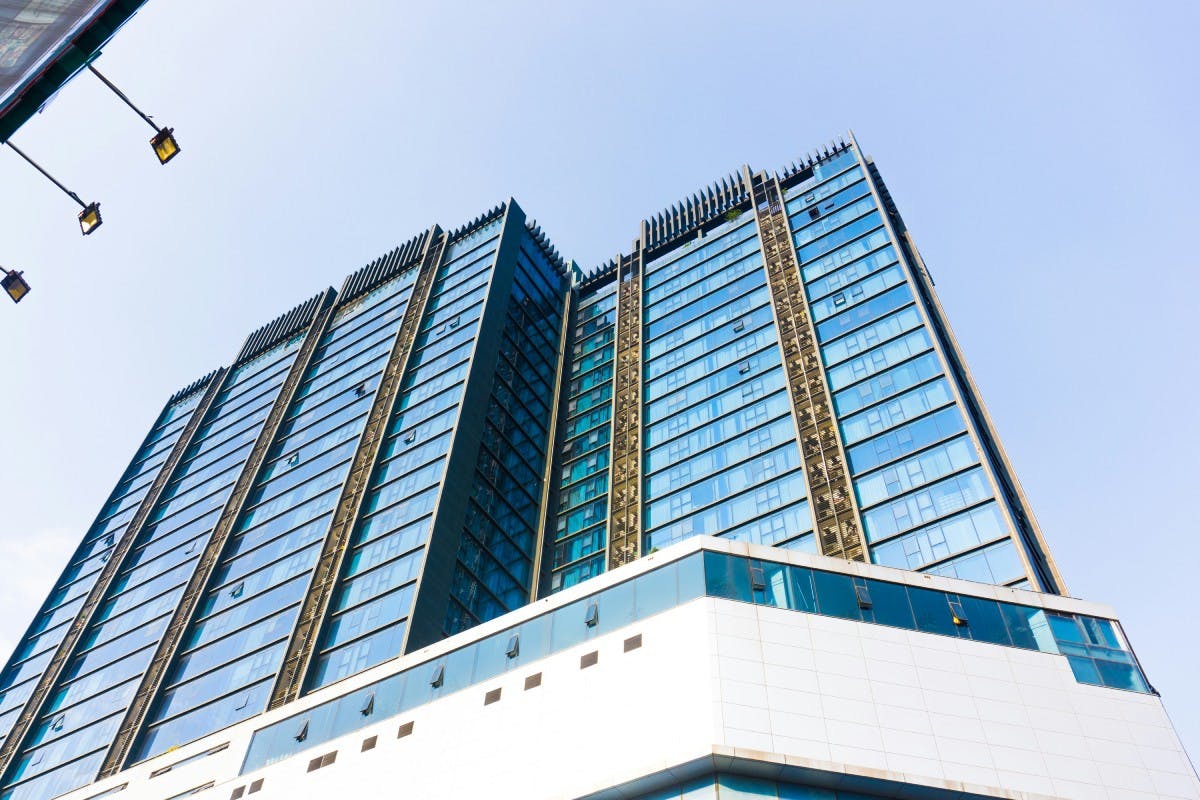Insights
Complete Guide to Commercial Property Jargon
Published
08 May, 2019

Absorption Rate
The amount of time it would take a sales agent to sell a property, applied to a percentage, is known as the absorption rate. When applied to the entire market, real estate experts can get an indication of property demand and price assets accordingly. For example, if there were 100 properties for sale and 25 of these sold in a month, the absorption rate is 25 per cent. As a rough guide, an absorption rate lower than about 15 per cent will indicate a buyer’s market.
AFSL (Australian Financial Services Licence)
An AFSL (or AFS Licence) is required by every financial services business in Australia. This licence ensures all financial services are provided to clients efficiently, honestly and fairly, by obligating business representatives to stay on top of their training, competence and character. It’s an obligation by ASIC to maintain these standards (Read more about ASIC ).
Amenity
An amenity is a useful feature or facility in a building or a catchment area. Anything from a locality’s cafes and restaurants to a building’s bike storage and washroom (known as end-of-trip facilities) is considered an amenity. Amenities are one of the key features a commercial property investor should be looking for went hunting for their next investment.
APRA (Australian Prudential Regulation Authority)
The Australian Prudential Regulation Authority is the country’s watchdog of regulated institutions (banks, credit unions, building societies, private health insurers and most of the superannuation industry). APRA’s priority is to protect members and recipients of these services by making sure institutions meet their financial obligations.
ASIC (Australian Securities and Investments Commission)
The Australian Securities and Investments Commission is responsible for keeping a fair, transparent and efficient financial system for Australians. ASIC watches the conduct of financial services organisations and professionals who advise on investments, super, insurance, lending and deposits. They also hand out the AFS licence which every financial services business needs to operate.
Capital
The amount of money an investor has in an investment or has available for an investment. Capital is more lucrative than mere cash (although it sometimes is cash), because capital is intended to be used to generate wealth through investment. If cash means wealth, then capital means creating wealth.
Capital growth
When the investment increases in value over time – perhaps due to an improving market or improvements in the property itself – it’s referred to as capital growth. This is because the amount of money an investor has provided for the investment (capital) has grown to a larger sum.
Capitalisation Rate
A capitalisation rate (or cap rate) is a way to forecast a commercial property’s potential return on investment. It uses the expected annual operating income against the market value of a property, so an investor can see their potential return 12 months after they purchase the asset. Here’s the formula:
Capitalisation Rate = Net Operating Income / Market Value
So, for example, a term deposit offering 3 per cent annual return won’t fare well against the cap rate of a $1 million-dollar commercial property with an annual income of $90,000 ($90,000 / $1 million = 9 per cent annual return).
CGT (Capital Gains Tax)
When you sell your commercial property investment, any profit you make on the sale will be subject to tax. This tax is called Capital Gains Tax. To understand the capital gain on a property, you take the sale price and deduct both the purchase price and the property-related costs. A capital gains tax rate is then applied to this amount, which varies depending whether the asset was held for more or less than 12 months.
Covenants
A lease agreement will hold certain promises which both the landlord and tenant must abide by during the lease term. These obligations are called covenants and relate to what the tenant can and can’t do in the premises, how the property must be kept (and returned, once the lease expires), and what rights the landlord has. Breaching these covenants may result in one party paying remuneration to the other or the lease terminating.
Depreciation
Over time, an asset will lose its value. This is as true for fixtures inside a premises (furniture, equipment, fittings, etc) as it is for the property itself. The loss of value is called depreciation.
Depreciation is a large tax benefit. It can aid a commercial property owner reducing their tax obligations every year, as the total depreciation amount of the property is used to reduce the investment’s taxable income.
Read more about Depreciation
Due Diligence
Before purchasing a commercial property, it’s critical the buyer performs in-depth investigations into the asset during the due diligence period. A due diligence will usually mean investigating both the property’s systematic factors (return, WALE, surrounding market, etc.) and the more physical factors (location, physical building, local council plans, tenant profiles, environmental concerns etc.).
Read more about Due Diligence
Easement
Non-owners of a particular property may have the right to use and/or enter the premises under a legal right called an easement. It might mean a private road or path can be used without permission from the owner, or perhaps a telephone unit lays on private land and access is required.
Encumbrance
An encumbrance is a limitation placed over a property. This might relate to an easement or an interest of another party (commonly the bank with the encumbrance being a mortgage). Check the Certificate of Title obtained from your state titles office (for example, Landgate in WA) to see if any encumbrances sit on your property.
End-of-Trip Facility
A huge amount of Australian office employees walk, run or cycle to work. This growing trend of active workers need a place to shower, freshen up and store their possessions before work, so office properties install facilities to meet that need. End-of-trip facilities include anything from showers, bicycle parking, lockers and change rooms. Nowadays these facilities are a big focus for tenants and landlords.
Read more about end-of-trip facilities
Equity
Any part of your property which was purchased with cash is equity in the asset. This is on the contrary to any part of your property which was financed by a loan (termed debt).
Incentive
In a renter’s market, a landlord might reduce their property’s advertised rent and offer an incentive to attract a new tenant. Examples of an incentive might be a rent-free period, a contribution to a fit-out or a rent adjustment.
Leasing Agent
Landlords will often turn to leasing agents to find a tenant to occupy their property. The quality of the leasing agent might determine the quality of the businesses suggested to occupy the property. This is where industry relationships are imperative for a commercial property owner.
Option
In a lease agreement, the tenant may have the ‘option’ to continue renting the property for a specified amount of time after the lease expires. This additional amount of time is known as the option period.
LVR (Loan-to-Value Ratio)
Many property purchases are partially funded by the bank. The portion of funding compared to the property’s market value is calculated as a percentage and is important to understand, especially for the bank lending the money. This ratio is called the Loan-to-Value Ratio. If you take out a $4 million commercial loan to purchase a $10 million property, your LVR will be 40 per cent.
Many banks will lend up to maximum 60 to 65 per cent of the commercial property value.
Margin
A margin refers to the difference in an investment’s gross return and its outgoings. A positive margin shows investors are seeing more earnings than expenses over a period. So, the greater this number, the better for the investor.
NABERS (National Australian Built Environment Rating System)
NABERS measures the environmental performance of Australian buildings. The system was rolled out in 1998 and became the industry standard for sustainable building ratings. It considers a building’s electricity usage, natural light, air quality and overall environmental friendliness. These factors have been proven to increase employee productivity and reduce electricity bills.
NABERS gives a rating of one to six stars for a commercial property: the higher the rating, the better. Commercial property buyers will keep their eye out for this rating on a potential building – as will tenants. You can see why it is an important feature to consider in the buying process for an office asset.
Reserve Fund
Eventually, a time might come when a commercial property investment requires an injection of funds. An air conditioning unit might need replacement, or perhaps the premises needs a facelift to attract a new tenant. The savings or capital set aside to deal with these challenges is called a reserve fund.
Strata Title
A property with a strata title means an investor will have both individual ownership of the property (perhaps a level or unit in an office premises) and shared ownership with the remainder of it (i.e. lifts, foyers, reception areas).
Syndicate
Investors will combine their funds so they can invest in opportunities of a much greater scale than otherwise possible if they invested individually. This group of investors is called a syndicate and is sometimes established and managed by a central organisation of experts (called a syndicator).
Syndicates are particularly common in commercial real estate, where assets can have a substantial value and are otherwise unobtainable to invest in for the standard investor.
Syndicates come with a range of potential benefits for investors. They mean less hassle, as the major components of commercial property investment are looked after (research, due diligence, contracts, finance, management and divestment), it can be cheaper because the fees are split among others. There’s peace of mind knowing experts oversee important investment decisions and generally a better chance of higher returns (due to both the expertise of quality syndicators and the ability to invest in larger assets – which generally translate to larger returns).
Learn more about the benefits of investing in commercial property through a syndicate
Unconditional Approval
When an investment has ‘gone unconditional’, it means the bank has stamped their final finance approval on a commercial property deal. The next major step is for the deal to go to settlement.
Unencumbered
Simply put, a property is unencumbered when it has no encumbrance on it. This means a bank (or other non-owner) does not have an interest in the property and no easements are sitting on the title.
Value-Add
A property could need a facelift or fit-out, it could benefit from new signage, or perhaps even the tenant could be replaced for a stronger one when their lease expires. These are all examples of value-add opportunities, which commercial property investors may look to increase an investment’s capital growth.
Read more about when to spend on your commercial property
WALE (Weighted Average Lease Expiry)
The WALE is calculated by taking the average remaining lease term of each tenant (in years) with a weighting attributed to the square metre area each tenant occupies.
The WALE helps investors understand a few crucial factors, including what potential vacancies or lease negotiations lay ahead, how dependant the investment is on a major tenant and the expected term the property will receive guaranteed income.
Yield
The yield is the annual return a property will distribute to its owner(s) as a percentage.
To calculate the yield, you’ll take the annual rental income and divide it by the current property market value (specifically, this is known as the gross yield).
Commercial property is generally known for having much higher yields than residential property. High yields are one of the biggest draw cards of the commercial real estate market.
For more information on commercial property investment, and how you can invest alongside the experts, get in touch with Properties & Pathways today.



